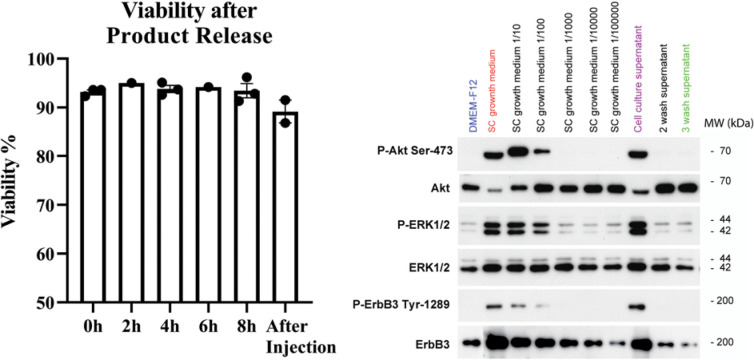FIG. 5.
Left: Pretrial SC product assessment. Assessments were made using SCs cultured from sural nerves of 3 cadaver donors. Product stability measured by viability at the time of release (0 h) and at 2, 4, 6, and 8 hours after release, and postinjection at 8 hours after release. Viability was sustained at all time points. Right: Specific antibodies recognizing the total and phosphorylated forms of ERK1/2 on tyrosine-204 (P-ERK1/2), Akt on serine-473 (P-Akt Ser-473), and ErbB3 on tyrosine-1289 (P-ErbB3 Tyr-1289) were used to detect heregulin residuals in SCs from the donors. Stimulation of SCs with DMEM/F12 served as a negative control (blue) for the detection of basal levels of ErbB3, ERK, and Akt phosphorylation. SC growth medium (red) was used as a positive control for maximal stimulation, and the serial dilutions of this medium in DMEM/F12 (from 1:10 to 1:100,000) generated a standard curve for dose-dependent responses to phosphorylation. Cells stimulated with the cell culture supernatant (purple) served as an additional positive control to assess the bioactivity of the culture media from the human SCs before trypsinization.

